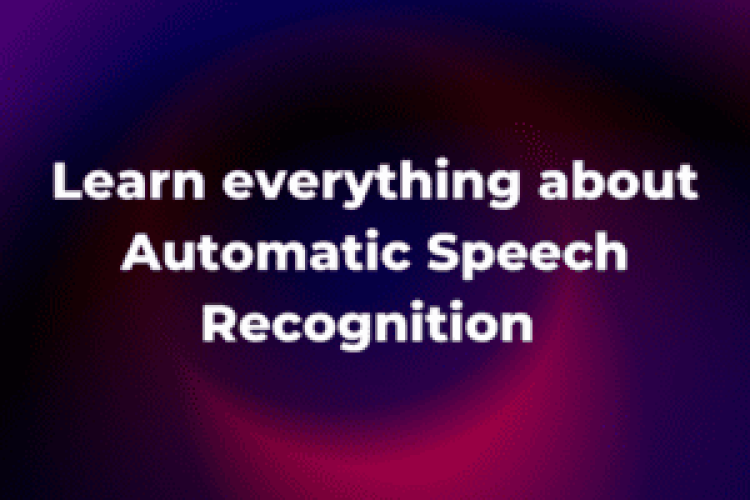By definition, automatic speech recognition (ASR) is a technology that enables call center software to recognize and analyze spoken words and phrases. The tool then transforms the audio recordings into text. In other words, when clients engage with your call center agent, the ASR analyzes what they say and takes action based on the conversation’s topic.
This article discusses the nature advantages and future of automatic speech recognition (ASR) in call centers.
Key Points:
- Automatic Speech Recognition (ASR) allows the interpretation of natural language
- ASR is based machine learning software that can understand accents, language mistakes and corrects itself
- ASR enhances customer satisfaction, agent experience and data security
What is Automatic Speech Recognition (ASR)?
Automatic Speech Recognition (ASR) is a technology of artificial intelligence that allows the interpretation of natural language. In other words, it takes the human voice from a microphone, analyzes it (word pronunciation, intonation, accent, etc.), and translates it into a computer request in the form of text or a computer-usable data.
This electronic system was made at Bell Labs by Davis, Biddulph, and Balashek. It was mostly made up of relays and could only recognize single digits. Then, during the 1970s, research grew significantly thanks to Jelinek’s work at IBM (1972-1993). In 1972, Threshold Technologies was the first company to sell the VIP100, which is a 32-word recognition system. Today, cloud systems are making speech recognition a fast-growing field.
Types of ASR Systems
The most common type of ASR system is text-to-speech (TTS), where a text is converted into a series of synthesized sentences. This is the most flexible type of ASR as it can be used for any kind of information, but it is the most complex.
There are also terminal input systems (TIS) and speech output systems (SOS), which convert the voice input from a person into text and vice versa. In other words, a person speaks the words, and the computer outputs them.
How does Automatic Speech Recognition (ASR) work?
Speech recognition is now a big part of our everyday lives. We use it all the time in the call center business and don’t even know it.
Why does it get used? The big advantage is that it only needs voice. You don’t need to use a keyboard (as with an Interaction voice response IVR). You don’t even have to write or speak a language well, because machine learning software can understand accents and language mistakes and change itself to fit. Not to mention that the voice is a much faster way to send information than writing. Voice recognition saves a lot of time in call centers.
To understand ASR, you need to look at how it combines 5 different models:
- Acoustic pre-processing: finds the parts of the recording that contain speech.
- The pronunciation model: links the words the system knows to their sounds.
- The acoustic model: predicts which phonemes are most likely.
- The linguistic model: predicts the most likely way that words will come together.
- The decoder: puts together the best guess to indicate a text transcription.
How does the ASR turn words into text?
The ASR works in 4 steps to turn spoken words into written ones:
- Detection of vocal activity: the soundtrack is cut up into pieces that match the time when a person speaks. In other words, the software tries to figure out when people are talking.
- Segmentation: The goal of segmentation is to figure out who each speaker is. To do this, the software connects the different segments that come from the same speaker based on subtleties in the language, like the accent.
- Decoding: Each piece of audio has a list of syllables, which is also called phonemes. At this point, the software makes a list of what could happen.
- Review: The software looks through the list of possibilities to find the one that makes the most sense to it. The transcription is done during this last step.
How does Automatic Speech Recognition (ASR) benefit call centers?
Automatic speech recognition can help businesses in more ways than just making the customer experience better. Including:
Customer satisfaction
Speech recognition technology can help make conversations more natural and human-like, which can lead to more self-service and a higher level of customer satisfaction. As it is able to give great customer service and improve the rate of self-service system containment.
Call Center Cost efficiency
When automated speech technology is added to a call center, the time that compliance teams have to spend listening in on calls is cut down. Innovations like better call routing and privacy software that works on its own also free up staff. This means that handlers can take more calls during the day, and the cost of each call to the center goes down as a result.
Improved accuracy
ASR solutions have adapted recognition engine models to audio patterns that make it easier for computers to figure out what is being said than it is for human ears. This makes them both faster and more accurate than their human counterparts.
Time saving for call center agents
Speech recognition technology can free up agents of an organization to do other important work for the organization. With this technology, it’s easy to get dynamic and real-time information like names and addresses.
Automated, accurate call screening also helps agents do their jobs better because supervisors can coach them better and easier.
This helps all agents in the call center, including those who are working with customers and callers who are facing problems in a time critical environment.
Enhanced customer service
Among the many benefits that businesses can gain from integrating speech recognition solutions, the most important one is that the technology will provide better, faster and more accurate customer services, resulting in better and happier customers and better business performance.
Large call centers may need extra support for the integration of their existing call center systems into a speech recognition solution, but others can take advantage of simple solutions that make use of existing call center systems. The management and operation of call centers can be streamlined by adding a mix of solutions such as speech recognition and real-time monitoring that will help in the implementation of consistent, efficient, and compliant systems.
The NobelBiz OMNI+ CCaaS solution’s agent interface is one of the most user-friendly on the market for contact centers, flawlessly merging call simplicity and operational interactions with a clean and accurate customer data flow. It is an engineering wonder in terms of efficiency and usefulness.
Also by integrating with Balto an AI-powered Real-Time Guidance Platform for Contact Centers, you can improve your business’s customer experience. Real-time assistance for contact centers may be utilized by NobelBiz OMNI+ subscribers to enhance client-agent interactions, raise conversion, and increase overall KPIs.
Contact Center Data Security
Automatic speech recognition technology can recognize a clients’ voice because it has biometric functions that can identify unique traits in a person’s voice. This means that call centers like debt collection that rely on strong security features can use this technology to cut down on fraud and keep their customers data safe.
What does the future hold for ASR Technologies?
Due of the time savings compared to writing, automatic speech recognition is increasingly widely used.
The widespread adoption of voicebots and callbots has led to multi-talker recognition becoming the most popular form of automatic speech recognition (ASR). However, keep in mind that automatic speech recognition is always used in 2 ways:
- Voices that can be recognized by a multi-speaker system: To do this, the program has to be online so that the query may be checked against a cloud-based database.
- Local server-based fix for single-speaker recognition: From a business standpoint, its use is especially intriguing. Companies operating in unique markets often need to adopt a specialized lexicon. Incorporating a new vocabulary that the program will be able to identify in the future is now conceivable thanks to monolocutor recognition. The user’s voice will need to be recorded in advance so the program has something to compare to.
The advantages of voice technologies are indisputable, but are they applicable to all contact centers? With decades of consulting expertise, Fred Stacey, Co-Founder & GM of Cloud Call Center Search, believes it is helpful to enterprises only when properly integrated and driven to the agent level. Learn more from our episode on the Benefits of Call Center Speech Analytics.
Colin Taylor, CEO & CCO at The Taylor Reach Group says: for a higher level of customer satisfaction, you should put the skills and abilities of your agents first. This will help you make sure that your methodology has the right process and the right technology. For more insights, listen to our podcast episode on Tools that ensure a higher customer satisfaction level.
Conclusion
The development of speech recognition in telecommunications, notably in the area of interactive voice servers, has been essential in reviving business phone services.
In concrete terms, promoting machine-human conversation helps bring your call center image up-to-date, making it a good fit with the digital advancements now available on the market.
Additionally, the caller will have an easier time navigating thanks to speech recognition. Keyboard errors and menu confusion are no longer an issue. In the future, users will simply need to utter a few keywords or explain their exact motivations to be routed.

Abdelmounim Benharouga has always had a strong passion for writing and digital marketing. He started as a Digital Content Writer part of marketing department then moved to being Customer Success Manager for the African Region within the Nobelbiz team.



